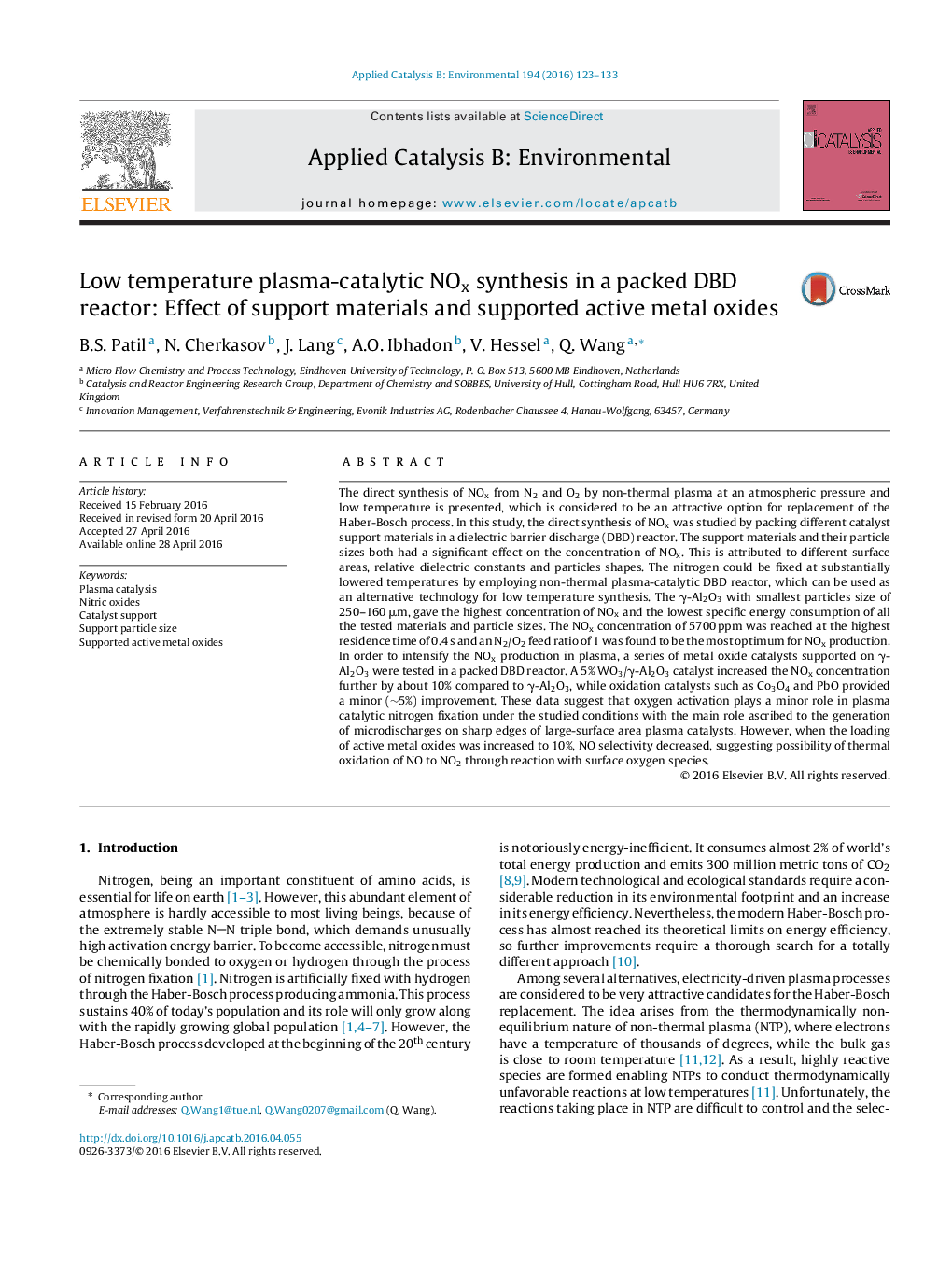| Article ID | Journal | Published Year | Pages | File Type |
|---|---|---|---|---|
| 44793 | Applied Catalysis B: Environmental | 2016 | 11 Pages |
•Plasma-catalytic NOx formation was studied at atmospheric P and low T using a range of materials.•Sharp edges and high surface area of plasma catalysts enhance NOx formation.•Catalyst particles with 0.2 mm diameter produced 2.5 times higher NOx than 1.3 mm.•Active metal oxides enhanced NO oxidation to NO2.
The direct synthesis of NOx from N2 and O2 by non-thermal plasma at an atmospheric pressure and low temperature is presented, which is considered to be an attractive option for replacement of the Haber-Bosch process. In this study, the direct synthesis of NOx was studied by packing different catalyst support materials in a dielectric barrier discharge (DBD) reactor. The support materials and their particle sizes both had a significant effect on the concentration of NOx. This is attributed to different surface areas, relative dielectric constants and particles shapes. The nitrogen could be fixed at substantially lowered temperatures by employing non-thermal plasma-catalytic DBD reactor, which can be used as an alternative technology for low temperature synthesis. The γ-Al2O3 with smallest particles size of 250–160 μm, gave the highest concentration of NOx and the lowest specific energy consumption of all the tested materials and particle sizes. The NOx concentration of 5700 ppm was reached at the highest residence time of 0.4 s and an N2/O2 feed ratio of 1 was found to be the most optimum for NOx production. In order to intensify the NOx production in plasma, a series of metal oxide catalysts supported on γ-Al2O3 were tested in a packed DBD reactor. A 5% WO3/γ-Al2O3 catalyst increased the NOx concentration further by about 10% compared to γ-Al2O3, while oxidation catalysts such as Co3O4 and PbO provided a minor (∼5%) improvement. These data suggest that oxygen activation plays a minor role in plasma catalytic nitrogen fixation under the studied conditions with the main role ascribed to the generation of microdischarges on sharp edges of large-surface area plasma catalysts. However, when the loading of active metal oxides was increased to 10%, NO selectivity decreased, suggesting possibility of thermal oxidation of NO to NO2 through reaction with surface oxygen species.
Graphical abstractFigure optionsDownload full-size imageDownload as PowerPoint slide
